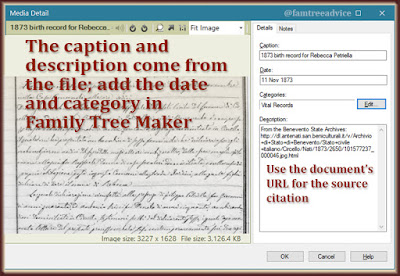With so many juicy genealogy leads, what should be my priority? If I never had to work, or cook or clean or eat or sleep, I wouldn't need to make this decision.
A few distant relatives have been writing to me from different branches of my family tree. When that happens, I shift gears and work on their branch until I come to a conclusion.
Because of these shiny genealogy objects, I've been bouncing around from:
- Most of Dad's side, working my way through an amazing reference book about their hometown.
- My paternal grandmother's maternal side, connecting myself to a cousin in Western Australia.
- My maternal grandmother's maternal grandmother's side (that's my 2nd great grandmother), collaborating with a distant cousin from that town.
All this bouncing around made me wonder—am I putting my effort in the right places? I've done an enormous amount of work on some of my 7 ancestral hometowns. Should I be working on different towns?
Let's turn this into a game of percentages and let the numbers point us in the right direction.
My family origins are pretty homogeneous. My 8 great grandparents came from 4 neighboring towns in Italy. Once you get to my 3rd great grandparents, a few more towns enter the mix.
 |
| Let your ancestors help you set your genealogy research priorities. |
We each have 32 3rd great grandparents. Looking only at them in my family tree, I can see how many of the 32 came from each of my 7 ancestral hometowns. I can divide that number by 32 for a percentage of my genetic makeup. Here are my 7 towns, ranked by percentage of my 3rd great grandparents:
- 11 come from Colle Sannita: 34.34%
- 8 come from Baselice: 25%
- 6 come from Sant'Angelo a Cupolo: 18.75%
- 4 come from Pesco Sannita: 12.5%
- 1 comes from Apice: 3.125%
- 1 comes from Circello: 3.125%
- 1 comes from Santa Paolina: 3.125%
The bottom 3 towns are a small percentage of my origin, but they could be easy to tackle.
In Apice, for example, I've identified half of my 8 6th great grandparents. All were born in the early 1700s. I may find their death records included in their descendants' marriage records. Those documents should tell me their parents' names.
 |
| You may still need to build your tree wide to find those missing ancestors. |
Completing Apice wouldn't yield a big percentage of my ancestry. But it should be a reasonably quick task. The same is true for Santa Paolina and Circello. There are lots of vital records available for these 3 towns.
At the other end of the spectrum is Colle Sannita, which makes up more than a third of my family tree. More than a third of me! Next comes beautiful Baselice, which is a quarter of me. And I happen to look just like my great grandmother from Baselice.
The percentages justify the insane amount of time I spend on my Colle Sannita ancestors. It's not only the birthplace of my maiden name; it's very much in my bones.
Then again, when faced with a large task, I always chip off the easy parts first. It's my mental trick to keep me going. When I'm shoveling snow in our driveway, I never commit to doing the whole job in one session. I bargain with myself. I say, "I'll just make a path for one car." And when that's done, and I'm still feeling fine, I say, "I'll just widen that path and clean up the edges."
One bit at a time, I trick myself into doing the whole job. But I never made a commitment. So this bargaining side of me wants to pick off the bottom 3 towns in my list first. I need to find:
- 4 6th great grandparents from Apice.
- 8 6th great grandparents from Circello.
- No 6th great grandparents from Santa Paolina, but 10 missing 7th great grandparents.
I need to tackle those. Looking at my 12.5% town of Pesco Sannita, I need 12 of my 16 6th great grandparents. I haven't spent a lot of time on this town. I'll bet those names are waiting for me.
My next highest town (Sant'Angelo a Cupolo) doesn't have records available before 1861. I don't expect to go back any farther than I have. As for Baselice, that was my "gateway" genealogy town. I spent 5 years viewing the 1809–1860 vital records on microfilm and piecing together families. While there are ton more recent vital records available to me now, I don't think I can go any higher in my family tree; just wider.
There. I've found my priorities, in this order:
- Find the 4 missing 6th great grandparents from Apice.
- Find the 8 missing 6th great grandparents from Circello.
- Search my Santa Paolina records to complete that set of 7th great grandparents. (I've been renaming my collection of vital records to include the name of the person in the document. Game-changer!)
- Find the 12 missing 6th great grandparents from Pesco Sannita.
- Return to my Colle Sannita book that details the 560 families living there in 1742.
You may set your priorities in a different way. I'll bet you thought I'd go for the highest percentage town first. You didn't know how much I love doing the easy stuff first.
I feel great about this plan. Instead of trying to split my time among the towns, I have specific goals.
You may have hometowns that are almost impossible to research. That will influence your plans. Those towns may call out to you most strongly, but don't let them stop the rest of your progress. So…what are your percentages?
And speaking of priorities:











